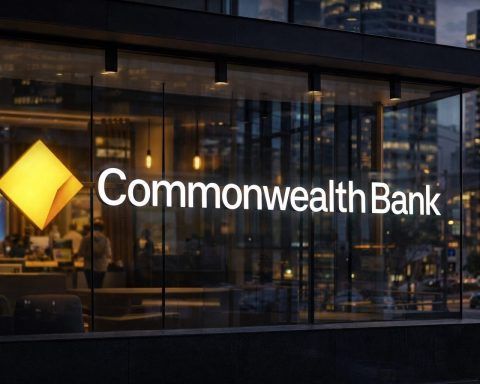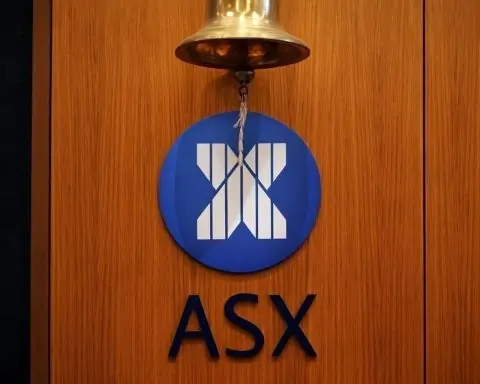- Wall Street Backs Prediction Markets: Intercontinental Exchange (ICE) – owner of the NYSE – is investing up to $2 billion in crypto prediction platform Polymarket, valuing it around $8–10 billion [1]. It marks the first major Wall Street stake in a betting market startup, sending ICE’s stock up ~4% on the news [2].
- Polymarket Eyes $15B Valuation: Buoyed by ICE’s vote of confidence, Polymarket is now reportedly in talks to raise new funds at a $12–15 billion valuation [3] – a stunning leap from roughly $1 billion just months ago [4]. Investors are racing to back the fast-growing platform as it re-enters the U.S. market.
- From Ban to Boom: Founded in 2020, Polymarket was fined $1.4 million in 2022 for unregistered event-betting and barred U.S. users [5]. After operating overseas for three years, it acquired a CFTC-licensed exchange for $112 million and secured a regulatory green light in Sept 2025 to legally relaunch in the U.S. [6]. CEO Shayne Coplan hailed it as a “green light to go live in the USA,” achieved in record time [7].
- Big-Name Backers Pile In: Polymarket’s rise has attracted heavyweights. Peter Thiel’s Founders Fund led a mid-2025 round valuing it above $1 billion, and Donald Trump Jr. joined as an adviser in August [8]. ICE’s massive stake now adds blue-chip credibility. “Our partnership with ICE marks a major step in bringing prediction markets into the financial mainstream,” said CEO Coplan [9].
- Betting Markets Boom: Once niche, prediction markets are exploding. Rival startup Kalshi just raised $300 million at a $5 billion valuation [10] and now handles more trading volume than Polymarket [11]. Analysts project the sector’s total volume will surge from ~$1.5 billion in 2024 to $95 billion by 2035 [12]. Traditional bookmakers are on notice – DraftKings’ stock is down ~40% from 2025 highs amid fears these crypto markets are encroaching on sports betting [13]. An activist short-seller warns Wall Street may be “downplaying the tectonic shift” such platforms pose to gambling giants [14].
Wall Street’s $2 Billion Bet on Polymarket Signals Mainstream Embrace
In a landmark move blurring the line between Wall Street and crypto, Intercontinental Exchange (ICE) – the parent of the New York Stock Exchange – has unveiled plans to invest up to $2 billion in Polymarket [15]. The deal, first reported by WSJ and Bloomberg, would value the upstart at approximately $8–10 billion [16]. This is by far the largest traditional finance investment in a decentralized finance startup to date [17] [18]. It represents a bold endorsement of prediction markets by a blue-chip financial player.
Why it matters: ICE’s backing lends Polymarket instant legitimacy and resources as it prepares to relaunch in the U.S. “This would be a vote of confidence for the world’s largest prediction market, as it prepares to re-enter the U.S. after years in regulatory limbo,” noted one Reuters report [19] [20]. Wall Street’s biggest exchange operator is essentially wagering that betting on real-world events could become a major new asset class. ICE’s own stock initially jumped ~4.4% on the news, reflecting investor excitement at this forward-thinking gamble [21] [22].
Strategic synergy: Beyond the capital, ICE is bringing strategic heft. Under the agreement, ICE will become the global distributor of Polymarket’s data – packaging the platform’s live betting odds and trends into real-time “sentiment indicators” for institutional traders [23]. “The real prize for ICE is not just clearing contracts but monetizing the data, selling odds as sentiment factors alongside rates and credit,” explains Michael Ashley Schulman, CIO at Running Point Capital Advisors [24]. In other words, ICE aims to leverage Polymarket’s crowd-generated predictions as a new market data product, treating the wisdom of the crowd as a valuable asset. The two companies also plan to collaborate on tokenization initiatives, exploring ways to integrate blockchain-based trading with traditional finance [25] [26].
ICE CEO Jeffrey Sprecher framed the deal as a marriage of old and new. “Our investment blends ICE – founded in 1792 – with a forward-thinking, revolutionary company pioneering change in DeFi,” Sprecher said, calling Polymarket a user-driven innovator that bridges legacy finance and crypto [27]. In Wall Street circles, the partnership is seen as symbolic of finance’s growing integration with blockchain. It comes amid a broader institutional pivot toward tokenized assets – even the SEC has been easing paths for crypto-based products, prompting giants like BlackRock and Fidelity to explore the space [28]. ICE’s move could be a decisive catalyst in bringing prediction markets fully into the financial mainstream [29].
From Outlawed Startup to U.S. “Green Light”
Just three years ago, Polymarket was essentially outlawed in its home country. In early 2022 U.S. regulators cracked down, fining the platform $1.4 million for offering event-based binary bets without proper registration [30]. Polymarket promptly blocked U.S. users to appease the Commodity Futures Trading Commission (CFTC). For a time, the world’s biggest prediction market could only operate overseas, stunting its growth in the crucial American market.
However, founder and CEO Shayne Coplan quietly plotted a return. By mid-2025, Polymarket took bold steps to get back onside with regulators. In July it acquired QCX, a CFTC-registered exchange, for $112 million, instantly gaining a licensed venue for U.S. event contracts [31] [32]. Then in September, the CFTC granted Polymarket a rare no-action letter, effectively blessing its U.S. relaunch [33]. Coplan hailed the regulators’ speedy approval as a “green light to go live in the USA” – noting it came much faster than anyone expected [34]. By early October 2025 – almost exactly three years after the shutdown – Polymarket was preparing to flip the switch back on for American users [35].
Comeback trail: Polymarket’s U.S. site is set to launch imminently, pending resolution of a government shutdown that temporarily slowed CFTC processes [36]. When it opens, U.S. customers will finally be able to legally wager on Polymarket’s markets – from NFL games and elections to economic indicators – using cryptocurrency. The timing couldn’t be better: public interest in such markets is high, and Polymarket now has the war chest and imprimatur of ICE to scale up quickly in the U.S.
High-profile supporters: The startup’s journey from regulatory exile to being courted by Wall Street has drawn notable allies. Billionaire Peter Thiel’s Founders Fund quietly led a funding round over the summer that valued Polymarket above $1 billion [37]. And in August, Donald Trump Jr. not only invested but also signed on as a Polymarket adviser [38], just as the platform’s U.S. election markets were gaining attention. Now ICE’s entry takes Polymarket to another level. “Our partnership with ICE marks a major step in bringing prediction markets into the financial mainstream,” Coplan said of the deal [39]. It’s the first time a major Wall Street institution has bet on this sector, lending Polymarket a stamp of credibility as it steps onto a bigger stage [40].
Prediction Markets Boom as Finance and Gambling Converge
Polymarket’s rapid ascent is part of a broader prediction market boom underway in 2025. Once a niche playground for crypto gamblers and political junkies, these platforms are now attracting serious capital and users by promising a novel fusion of finance, betting, and crowd-sourced insight. Participants buy and sell shares on yes/no outcomes of real-world events – effectively trading on what they believe will happen in sports, politics, economics or even pop culture [41]. The price of a contract reflects the crowd’s implied probability of the event, turning public opinion into a market-driven odds indicator.
Explosive growth: The numbers underscore the surge. Analysts estimate total trading volume on prediction platforms will explode from about $1.5 billion in 2024 to $95 billion by 2035 [42]. Startups in the space are raising eye-popping sums. Earlier this month, Polymarket’s chief rival Kalshi – a CFTC-regulated exchange launched by MIT graduates – announced a $300 million Series D funding round at a $5 billion valuation [43]. That more than doubled Kalshi’s valuation from just a few months prior and brought in backers like Sequoia, a16z, Paradigm, and even Alphabet’s CapitalG [44] [45]. With fresh capital, Kalshi is expanding globally and now boasts over 60% of worldwide prediction market volume, having leapt past Polymarket in trading activity this fall [46]. In September alone, Kalshi handled ~$1.3 billion in bets (largely driven by sports markets), nearly double Polymarket’s ~$773 million [47].
Traditional gambling and finance players are taking note – and in some cases, taking fright. Online sportsbook giant DraftKings has seen its stock slide nearly 40% from 2025 highs, which analysts partly attribute to investor fears that prediction exchanges like Kalshi and Polymarket will steal share in sports betting [48]. These crypto-native platforms have begun offering sports-related markets and parlay-style bets that edge into sportsbook territory [49] [50]. “Wall Street may be downplaying the tectonic shift” such decentralized platforms pose to traditional bookmakers, one activist short-seller warned [51]. Gaming industry insiders likewise describe prediction markets as both a “competitive threat” and “a regulatory dilemma” for casinos and betting apps [52]. Indeed, regulators are still grappling with how to classify and oversee these hybrid markets – part wagering, part securities trading. Kalshi, for instance, has faced pushback from state gambling authorities who argue some of its sports contracts amount to unlicensed betting, even as Kalshi insists its CFTC license preempts state law [53].
Why the frenzy? Beyond pure speculation, many see real informational value in prediction markets. During the 2024 U.S. elections, millions of users wagered over $3 billion across Polymarket and Kalshi, and the crowd-driven forecasts proved more accurate than many polls [54]. This validation of the “wisdom of crowds” has fueled investor enthusiasm for event-driven trading. Tech and finance firms are also eyeing synergy: retail brokerage Robinhood began offering access to event contracts via a partner exchange, and CME Group reportedly partnered with a sportsbook to explore event futures [55]. The overarching bet is that transforming opinions and predictions into tradable assets could open a massive new market – one that blurs entertainment and investment. As one Bloomberg analyst put it, the rise of Polymarket and its peers “represents a bridge between legacy financial institutions and next-generation data-driven markets” [56].
What’s Next: Soaring Valuations, Token Launches, and Wall Street Integration
With ICE’s backing secured, Polymarket is wasting no time capitalizing on its momentum. According to insiders, the company is already in early talks with investors for a new funding round that could value it as high as $15 billion [57]. That figure is staggering – it implies Polymarket’s valuation would have roughly 15× in the span of a year (recall it was ~$1 billion in mid-2025 [58]). Even compared to just a month ago, when the ICE deal pegged it around $9 billion, a $15 billion price tag would be a huge jump. The rumor underscores the surging investor appetite for a stake in this sector’s presumed leader. “The ninefold increase in valuation shows how quickly the prediction market space is growing,” observed Brave New Coin, noting Polymarket’s value soared from $1 billion in June to $9 billion by October [59].
Polymarket also has big plans to deepen engagement with its user community. This week, the company confirmed it will launch its own token, dubbed POLY, and conduct an airdrop to reward early users [60]. The announcement – made by Polymarket’s CMO on an Oct 24 podcast – ended months of speculation that the platform would introduce a native token. However, the rollout won’t be immediate. “Right now our core priority is launching in the U.S. and making a big splash there,” the CMO said, emphasizing the token will come only after the U.S. relaunch is firmly on track [61]. Industry analysts expect the POLY token will have real utility, likely granting holders governance rights and staking rewards on the platform [62]. By taking a measured approach and ensuring the token has “true utility” rather than just hype, Polymarket aims to build longevity into its ecosystem [63]. The token launch is tentatively projected for 2026, once the U.S. platform is fully operational and stable [64].
The road ahead: As Polymarket’s U.S. debut nears, all the pieces seem to be falling in place. The platform boasts 1.35 million traders globally, a figure poised to grow as Americans join in [65]. Its markets have been buzzing with record activity – combined trading volumes across major prediction exchanges hit all-time highs in recent weeks, even surpassing levels seen during the frenzied 2024 election period [66]. With one of Wall Street’s most respected firms in its corner and a compliant U.S. framework secured, Polymarket appears positioned to vault into the financial mainstream. The company’s mission, as Coplan often describes it, is to bridge DeFi and traditional finance [67] – and that bridge now has a $2 billion pillar from ICE supporting it.
Whether Polymarket ultimately lives up to the hype remains to be seen, but its trajectory embodies the convergence of finance, tech, and betting. A few years ago, the idea of the NYSE’s owner bankrolling a crypto prediction market might have sounded far-fetched. Today it’s reality, and could well be a harbinger of fintech’s future. As Fortune once noted, crowd-based markets can outshine experts when it comes to forecasting [68]. Now, with deep-pocketed backers, regulatory clearance, and a passionate user base, Polymarket is making the case that betting on knowledge – and monetizing the data behind it – is the next big frontier. In the words of ICE’s Sprecher, this bold partnership blends the “centuries-old exchange” with a “forward-thinking” disruptor [69]. Wall Street’s giant has placed its bet, and the world will be watching to see if it pays off in a $15 billion way [70].
Sources: Bloomberg [71] [72]; Reuters [73] [74]; TechStock²/TS2 [75] [76] [77] [78]; Brave New Coin [79] [80]; Mid Hudson News [81] [82].
References
1. ts2.tech, 2. ts2.tech, 3. www.reuters.com, 4. www.reuters.com, 5. ts2.tech, 6. ts2.tech, 7. ts2.tech, 8. ts2.tech, 9. ts2.tech, 10. ts2.tech, 11. ts2.tech, 12. ts2.tech, 13. ts2.tech, 14. ts2.tech, 15. ts2.tech, 16. ts2.tech, 17. midhudsonnews.com, 18. midhudsonnews.com, 19. ts2.tech, 20. ts2.tech, 21. ts2.tech, 22. ts2.tech, 23. ts2.tech, 24. ts2.tech, 25. ts2.tech, 26. bravenewcoin.com, 27. ts2.tech, 28. midhudsonnews.com, 29. midhudsonnews.com, 30. ts2.tech, 31. bravenewcoin.com, 32. bravenewcoin.com, 33. bravenewcoin.com, 34. ts2.tech, 35. ts2.tech, 36. bravenewcoin.com, 37. ts2.tech, 38. ts2.tech, 39. ts2.tech, 40. ts2.tech, 41. ts2.tech, 42. ts2.tech, 43. ts2.tech, 44. ts2.tech, 45. ts2.tech, 46. ts2.tech, 47. ts2.tech, 48. ts2.tech, 49. ts2.tech, 50. ts2.tech, 51. ts2.tech, 52. ts2.tech, 53. ts2.tech, 54. ts2.tech, 55. ts2.tech, 56. ts2.tech, 57. www.reuters.com, 58. www.reuters.com, 59. bravenewcoin.com, 60. bravenewcoin.com, 61. bravenewcoin.com, 62. bravenewcoin.com, 63. bravenewcoin.com, 64. bravenewcoin.com, 65. bravenewcoin.com, 66. bravenewcoin.com, 67. ts2.tech, 68. ts2.tech, 69. ts2.tech, 70. www.reuters.com, 71. www.reuters.com, 72. www.reuters.com, 73. www.reuters.com, 74. www.reuters.com, 75. ts2.tech, 76. ts2.tech, 77. ts2.tech, 78. ts2.tech, 79. bravenewcoin.com, 80. bravenewcoin.com, 81. midhudsonnews.com, 82. midhudsonnews.com









